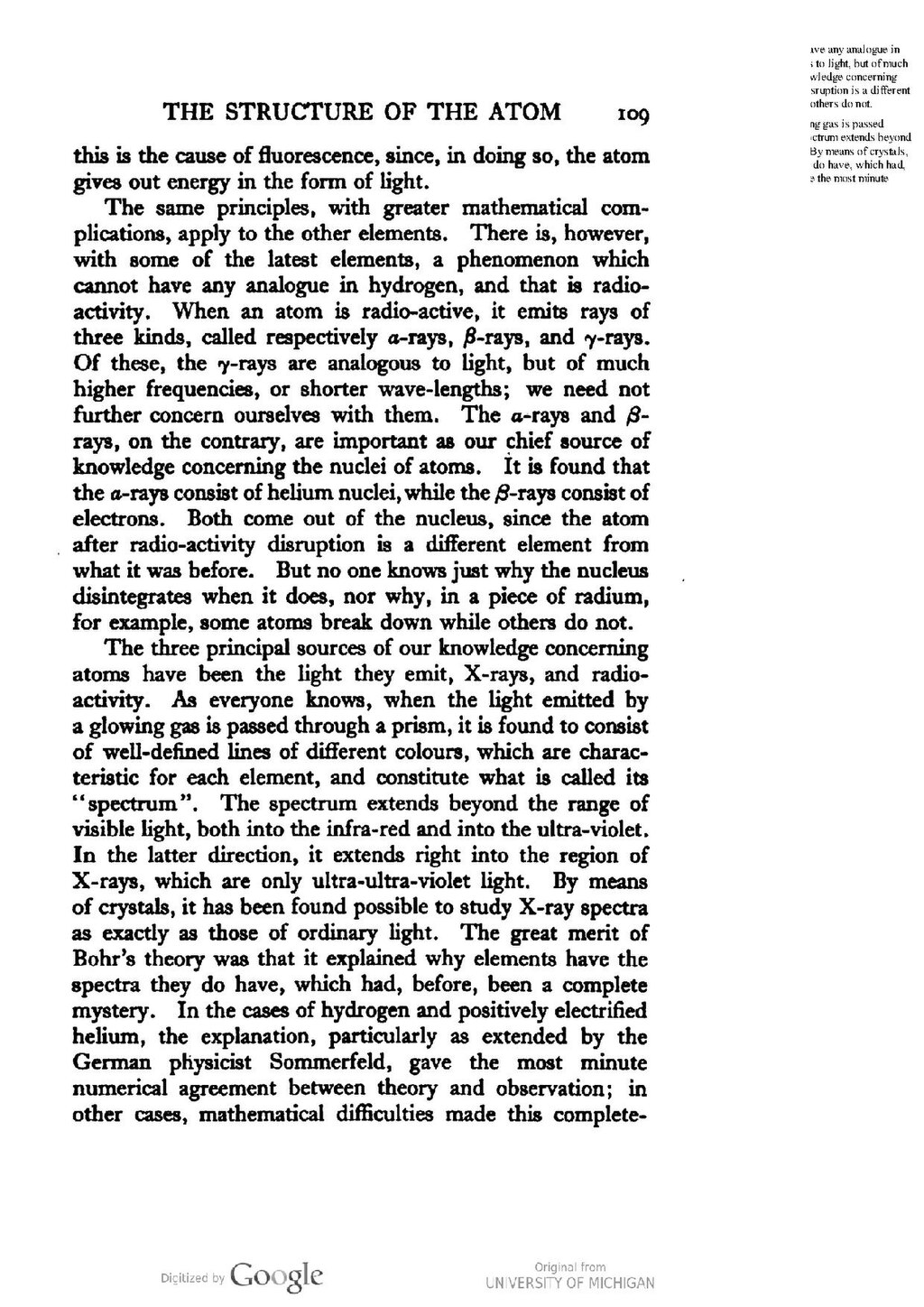this is the cause of fluorescence, since, in doing so, the atom gives out energy in the form of light.
The same principles, with greater mathematical complications, apply to the other elements. There is, however, with some of the latest elements, a phenomenon which cannot have any analogue in hydrogen, and that is radio-activity. When an atom is radio-active, it emits rays of three kinds, called respectively α-rays, β-rays, and γ-rays. Of these, the γ-rays are analogous to light, but of much higher frequencies, or shorter wave-lengths; we need not further concern ourselves with them. The α-rays and β-rays, on the contrary, are important as our chief source of knowledge concerning the nuclei of atoms. It is found that the α-rays consist of helium nuclei, while the β-rays consist of electrons. Both come out of the nucleus, since the atom after radio-activity disruption is a different element from what it was before. But no one knows just why the nucleus disintegrates when it does, nor why, in a piece of radium, for example, some atoms break down while others do not.
The three principal sources of our knowledge concerning atoms have been the light they emit, X-rays, and radio-activity. As everyone knows, when the light emitted by a glowing gas is passed through a prism, it is found to consist of well-defined lines of different colours, which are characteristic for each element, and constitute what is called its "spectrum". The spectrum extends beyond the range of visible light, both into the infra-red and into the ultra-violet. In the latter direction, it extends right into the region of X-rays, which are only ultra-ultra-violet light. By means of crystals, it has been found possible to study X-ray spectra as exactly as those of ordinary light. The great merit of Bohr's theory was that it explained why elements have the spectra they do have, which had, before, been a complete mystery. In the cases of hydrogen and positively electrified helium, the explanation, particularly as extended by the German physicist Sommerfeld, gave the most minute numerical agreement between theory and observation; in other cases, mathematical difficulties made this complete-
